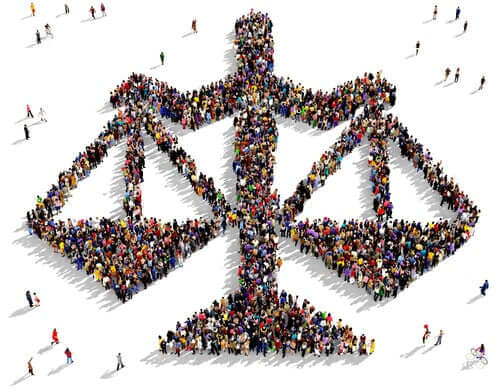
Impact Of Technology On Human Rights
Following nearly all global industrial revolutions to date, a peculiar common thread has persisted in their wake: technological advancements and related human rights violations. Despite the fact that technology and human rights seem to be wholly unrelated concepts, it is critical to understand the nuances connecting them in preparation for the next era of advancement.
At the most basic level, technology is the cumulative sum of any techniques, skills, methods, and processes used to produce goods or services or to accomplish specific objectives, such as scientific investigation. It both helps the human race pursue the quest to attain the unknown and opens doors to new avenues of exploration.
Recently, Harvard Kennedy School formed a Technology and Human Rights advisory committee that would work on the lines of the Universal Declaration of Human Rights in 1948 and encourage significant progress toward achieving more consistent human rights standards in countries around the world. The declaration was a ground-breaking agreement that affirmed the rights of individual citizens, including the right to freedom from discrimination, the right to education, the right to a free and fair world, and many more. Technological improvements inevitably have had far-reaching ramifications to further the human rights framework that it established.
Technology is continually evolving at an extraordinary pace. While there are significant benefits that technology can bring, there are ethical considerations that modern societies must be aware of to further protect themselves from human rights violation with the advancing intelligent technology.
Implications of technology on human rights
From a practical standpoint, technology serves as an important tool to aid in the advancement of universal human rights. For example, countries may use satellite data to track displaced individuals, artificial intelligence can help with picture recognition to collect data on human rights violations, and forensic technology can assist law enforcement organisations with reconstructing crime scenes and holding criminals accountable. Despite the numerous ways that developing technologies enhance human rights, the potential to harm also co-exists. From authoritarian nations using surveillance technologies to monitor political dissenters to the phenomenon of "deepfakes" undermining the democratic realm, policymakers must consider technology’s ethical and practical ramifications as technical breakthroughs advance.
Ramifications of technology
An article by the World Economic Forum (WEF) on technology and human rights likened the advances in technology to a fourth industrial revolution, underscoring technology’s potential to further and stymie human rights initiatives. According to the WEF, today’s three biggest technological trends are significantly influencing human rights around the world.
- Automation and the right to fair and decent work
Artificial intelligence (AI) in the workforce has the potential to be detrimental in that it may decrease the need for workers. For instance, the extensive use of AI chatbot software handles web-originating communication thereby makes human interaction obsolete. Further, deploying machine learning across various verticals, such as human resources, can create inequities in how data is used and available across geographies, thereby potentially introducing biases and flaws into the hiring process.
- The Internet of Things and the right to privacy
The introduction of the Internet of Things (IoT) to the public domain has led millions of users to give away private data through smart devices, which may potentially lead to the degradation of individuals’ rights to privacy.
- The Internet and freedom of expression
Globally, more than 3 billion people regularly use the internet, which provides a significant opportunity for individuals to exercise their rights of freedom of opinion and expression. However, governments around the world limit or prohibit internet access, suppressing these rights.
Three ways that technology can promote human rights
While there are certainly ways in which parties can use technology in furtherance of the violation of human rights, on the whole, it has the potential to immensely benefit society. These are three of the most significant benefits:
- Online learning and the right to education
The internet has revolutionised education systems in certain places where there was limited or no access to education, helping the most impoverished people engage in formal learning via educational technology platforms at minimal to no cost.
- Big data and human rights
Social media, crowdsourcing, and tracking devices that are built into vehicles such as mobile phones have helped to amass vast amounts of data on environmental conditions, migrations, and conflict situations around the world. Big data analysts can use the trends they gather from the information to identify early warning signals before a detrimental event occurs. For example, Microsoft uses big data to engage in humanitarian work, whereas NASA and meteorological organisations regularly use data analysis to predict storms and natural disaster occurrences.
- Protecting human rights in the supply chain
Many corporations' opaque supply lines still involve modern-day slavery. An estimated 30 million individuals are forced to work in supply chains in many different industries, including electronics, mining, and fisheries. Using an authentication technique like blockchain can help improve supply chain transparency from sourcing to client purchasing. Blockchain is already in use to eliminate supply chain abuses in some cases. For example, Everledger uses blockchain to trace diamond provenance, including whether the stone originates from a war zone. In an industry where slavery is rampant, provenance has explored tracking the origin of fish by keeping tabs on the catcher on the boat.
So, what’s next for technology and human rights?
While every attempt has been made to ensure that the information in this article has been obtained from reliable sources, neither Novum Learning or LPI nor the author is responsible for any errors or omissions, or for the results obtained from the use of this information, as the content published here is for information purposes only. The article does not constitute a comprehensive or complete statement of the matters discussed or the law relating thereto, and does not constitute professional and/or legal advice.
Also read top viewed Ai Legal article: The Role of AI in Legal Research.





